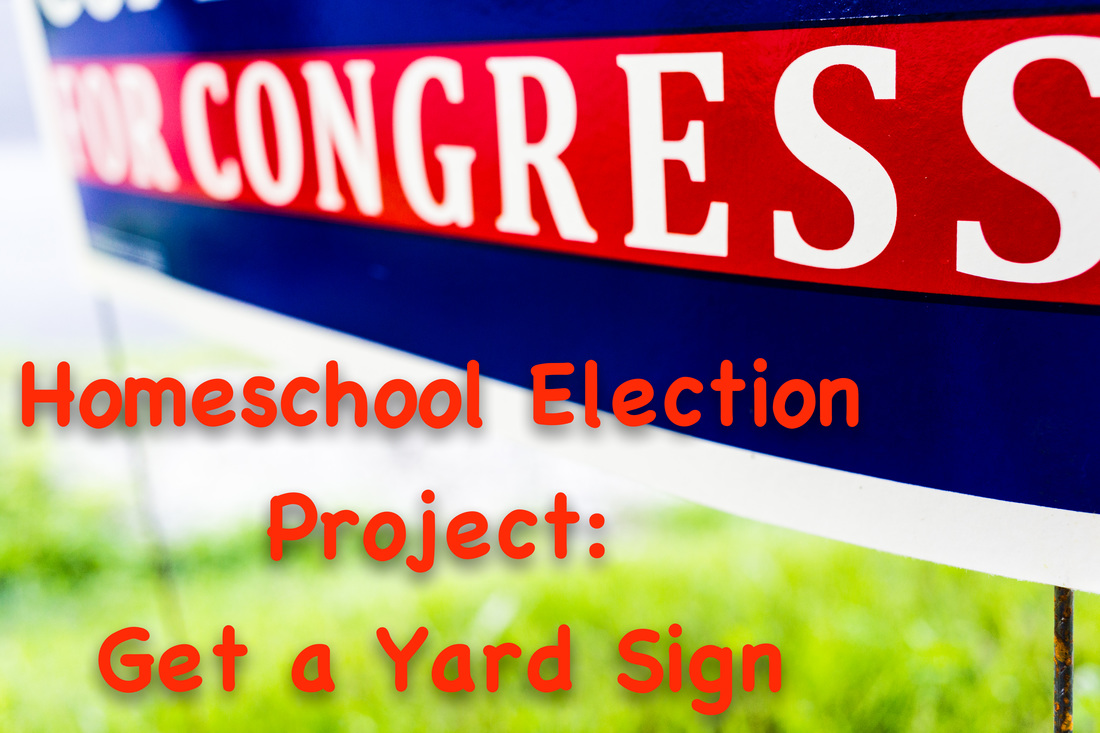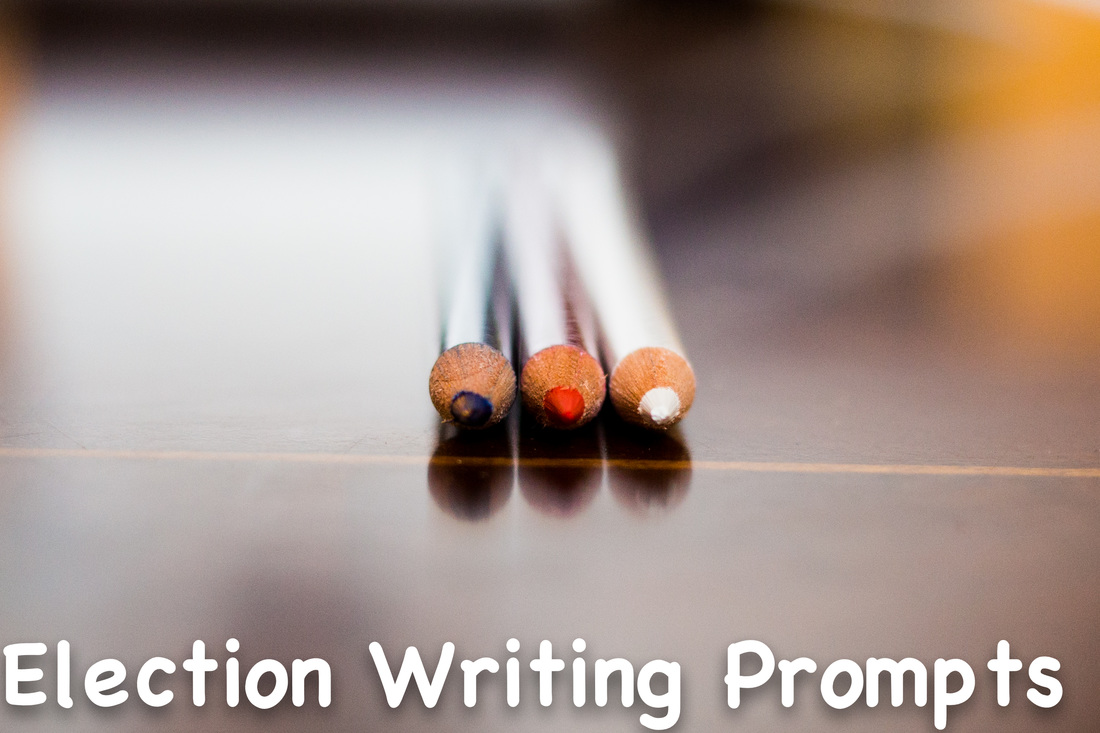 Labor Day, the unofficial transition to full-swing presidential campaigning, is almost here. Before we delve into general election strategies, we need to cover party platforms. This week, the challenge is to get your homeschool students to look further into important issues of the day be examining party platforms. Keep reading for more information and a free worksheet. Convention delegates gave the 2016 platforms of the Republican and Democratic parties the stamp of approval at the conventions in July. Party platforms spell out the goals and values of the party. They state what the party believes about the important issues of the day. I (Jill) think reading party platforms is a useful exercise. When I was writing my book on first ladies, they were the first place I would turn to get a sense of what was important to the people and parties operating during historical moments in time. However, most election years, platforms do not get very much attention. They are long and a little dry. Many believe they don't really matter. But this year, we heard much more about them than in years past. Donald Trump won the nomination even though he did not trumpet typical Republican issues. And Hillary Clinton's primary rival, Bernie Sanders, rounded up a mass following by calling for an even bigger role for the government than was typical for Democrats. In other words, Trump and Clinton were not always in synch with their parties. The platforms all of a sudden became interesting because many did not know what they would say about important issues like abortion, college affordability, health care, and trade. But since platforms have the potential to shape public policy--what the government does to solve public problems--they are worth investigating. This week, help your homeschool student gain insight into important issues through a closer look at party platforms. Weekly Challenge: Platforms and Issues 1. Access the 2016 Republican platform and Democratic platform. 2. Download the free printable worksheet. 3. Have students spend five minutes thinking about what they believe is the most important issue facing our country today. (If students do not know, here are some ideas: abortion, health care, jobs, college affordability, gun violence, pollution, terrorism, Russia, criminal justice, and so on). Note the issue on the worksheet provided. 3. Browse the party platforms to find out what the Republican and Democratic parties believe about those issues and what they say they will do about those issues. (Hint: Don't read the platforms word-for-word. Rather, skim the documents or consult the table of contents for the portions relevant to the issues). 4. Note the major points in the columns provided. 5. Repeat for as many issues as you would like. And for even more information on platforms and issues, consider adopting our Presidential Elections unit study: available here. Click here to download the free printable worksheet below.
2 Comments
 .One afternoon last week, I was at home with my kids when the doorbell rang. We opened the door and were greeted by a student canvassing for our U.S. congresswoman. She is running as the incumbent. (All members of the U.S. House of Representatives are elected every two years). The congresswoman knows, as every elected official does, that face-to-face contact with constituents is the best way to make sure citizens get out and vote. Even on that steamy summer afternoon, with the election still months away, the congresswoman's volunteers were going door to door. The student canvasser gave me information and asked if I would support the congresswoman. He also asked me if I would like a yard sign. I said yes. Later that day, he came back with the sign. My kids helped me pound it into the ground. It was a great learning opportunity. I had the chance to tell them a little about the congresswoman and what she stands for. When parents show kids they are engaged with politics--by doing things such as putting up a political yard sign--they are more likely to raise kids who are civically minded. Such activities help increase children's political knowledge and interest. Weekly Activity Put up a yard sign for your favorite candidate running for office. It could be for any election: presidential, congressional, state, or local. How to Get a Free Yard Sign The best way to get a free yard sign is to contact the campaigns directly. For the presidential campaigns, contact your local party organization. For other elections, go to the candidates' campaign websites. On my congresswoman's campaign website, for example, there is a form anyone can fill out to request a free yard sign. Vocabulary Here is some election vocabulary to go along with the yard sign activity. Teach your children these terms. Canvass: to solicit votes from electors. Constituent: a person who lives in a district represented by an elected official. Incumbent: the person who already holds the office for which he or she is running. For detailed lessons, resources and activities on the election, check out our Presidential Election Unit Study! Did the national conventions cause either of the candidates to go up in the polls? This is the question everyone is asking. The parties devoted so much money and effort to the conventions. They were certainly hoping voters would see their candidates in a more favorable light. Candidates usually see a boost in poll numbers immediately following their conventions. This is called the convention "bounce." On average in recent elections, the bounce has been about 5 or 6 percentage points for each candidate. Convention Bounce Facts *Bill Clinton enjoyed the biggest convention bounce in recent history. After the 1992 Democratic convention, his support rose by 16 percent. *John Kerry actually lost support after the 2004 Democratic convention, dropping about 1 percent in the polls. How did the Republican and Democratic candidates fare this year? Here's a fun convention bounce activity for your homeschool student. The activity will help increase knowledge of polling and sharpen graphing skills.
Now take a look at the line graph and answer the following questions.
Need some ideas to get your child thinking and writing about the election? Try using one or more of these five writing prompts. More advanced high school students can write 500 words, while younger children can complete the prompts in a few sentences.
1. The most important issue facing the country today is _________. 2. Do you trust the government to do what is right for you and your family? 3. What characteristics should a great president possess? 4. Are the presidential campaigns too negative? 5. [Your favorite candidate] would make the best president because __________.  This post is part of a multiple part series on teaching you child to think and write well. For a post on why your child needs to think well to write well, check out our earlier blog post - The Ancient Secret to Teaching your Child to Write Well. Our first tip for teaching your child to think well is to regularly have your child read persuasive writings that (1) support opposing positions and (2) are about a topic that is important to him or her. I (Josh) was homeschooled from the 6th grade all the way through high school, and sometime around the 9th or 10th grade, my parents decided that I needed to learn to write. My learning to write was not pleasant for them or me. My dad was a computer programmer. My mom was a nurse. They both had very different ideas of what good writing looked like and how to teach someone to write. To make matters worse, I hated writing. Though to be fair, at that age, I hated almost anything that took me away from my computer. My parents tried all sorts of different approaches and curricula. They coaxed and cajoled. They ordered and bribed. Nothing worked. Until, one of them, I don't remember which, had the idea to get me to write a paper about computers - specifically about why PCs were better than Macs (I had a PC). At first, I remained unmotivated. I would much rather work on my computer than write about one. But everything changed after I started reading about the issue. It was like a switch flipped - I could not stop. I went from hating writing to willingly spending time on the project. I read everything I could find on the issue, analyzed all the arguments, formulated a thesis, came up with a bunch of supporting arguments, and wrote a truly terrible essay. But it didn't matter - I had done the project willingly, even with joy. More importantly, I had thought critically about whether PCs were better than Macs and why. At the time, I didn't understand what had happened (and would not have cared if I had understood). But I have now seen this same phenomenon hundreds of times in my own life and the lives of others - a person is forced to think when they read persuasive writing about an issue they are interested in. Let's break down why. READ PERSUASIVE WRITING To learn to think well, your child must read persuasive writing or writing that takes and defends a position. While reading in general is helpful for your child for many other reasons, only persuasive writing is designed to change the audience's thoughts about a topic. By reading persuasive writing, your child will be forced to think about the topic of the writing. READ OPPOSING POSITIONS But, it is not enough just to have your child read persuasive writing that they agree with -- he or she must read persuasive writings that take different or opposing positions. If your child only reads writings on the same side of an issue, he or she will never be forced to consider how the arguments about an issue interact and have his or her convictions about a subject challenged. More than that, there is something powerful that happens when you read an article you disagree with - you almost cannot help thinking about why the author is wrong. You have probably experienced this when reading a Facebook post you do not like - you can not help thinking about why the author is wrong. READ INTERESTING TOPICS Finally and perhaps most importantly, your child must be interested in the topic. Remember - the goal is to teach you child to think. While some people find it easy and enjoyable to ponder anything and everything, most people, and especially children, enjoy thinking about topics they believe are important (like me, with computers). Thus, you will find it easier to get your child to think about a topic if they believe it is important or interesting. In summary, to teach your child to think well, have him or her read persuasive writings that (1) take opposing positions (2) on issues that are important to him or her. For more tips on teaching your child to think and write well or to receive updates about our upcoming writing curriculum, sign up for our writing newsletter. |
Silverdale PressCheck out our About Page to learn more about us! Categories |
||||||



 RSS Feed
RSS Feed